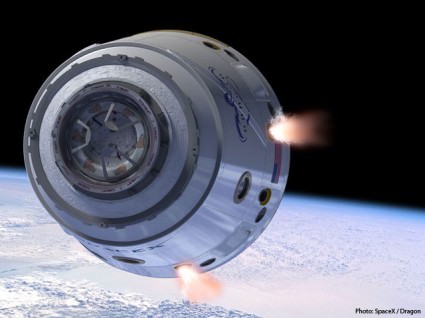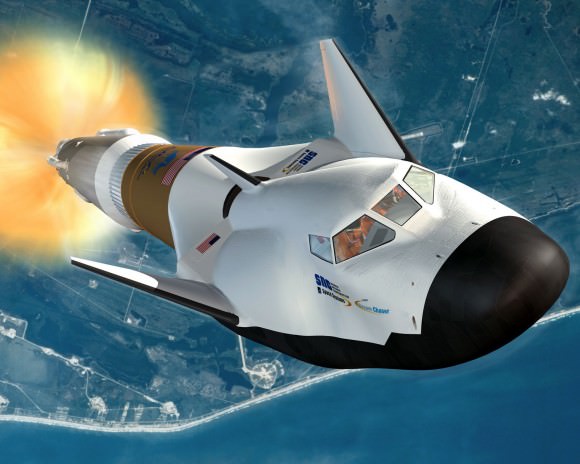

SpaceX was one of four companies whose proposals were selected as part of the Commercial Crew Development 2 (CCDev2) contract. Image Credit: SpaceX
[/caption]
NASA has announced the winners of the four second-round agreements under the Commercial Crew Development (CCDev2) program. These companies will now be awarded between $22 million and $92 million for their proposals. These funds will be used to help the winning commercial firms to develop and improve their concepts for bringing NASA astronauts to space.
These concepts cover both launch vehicles and the spacecraft that ride on them. NASA has selected Blue Origin and granted them $22 million, Sierra Nevada Corporation with $80, Space Exploration Technologies (SpaceX) with $75 million and Boeing with $92.3 million.
SpaceX said via Twitter that they will be ready to fly the first manned mission three years after receiving these new funds.


“The next American-flagged vehicle to carry our astronauts into space is going to be a U.S. commercial provider,” said Ed Mango, NASA’s Commercial Crew Program manager. “The partnerships NASA is forming with industry will support the development of multiple American systems capable of providing future access to low-Earth orbit.”
The CCDev initiative was started back in 2009 with the intent of jump-starting the aerospace community into expanding U.S. spaceflight capabilities. CCDev2 is designed to speed up this process and reduce the gap in the nation’s human spaceflight abilities (when space shuttle Atlantis completes its final mission this summer, the U.S. will essentially lose the ability to send astronauts into orbit).
CCDev2 saw an explosion of proposals for a variety of spacecraft, SpaceX, Orbital Sciences, Boeing, Blue Origin, Alliant Techsystems and Sierra Nevada all submitted ideas. It is hoped that new space markets might arise out of this project which could see an expansion of customers – both commercial and government.
“We’re committed to safely transporting U.S. astronauts on American-made spacecraft and ending the outsourcing of this work to foreign governments,” said NASA Administrator Charles Bolden. “These agreements are significant milestones in NASA’s plans to take advantage of American ingenuity to get to low-Earth orbit, so we can concentrate our resources on deep space exploration.”
A wide range of both established and new space companies entered submissions. Utah’s Alliant Techsystems (ATK) had proposed Liberty, a partnership between them and the European space company Astrium (the producers of the Ariane rocket). Orbital Sciences entered a mini space shuttle and United Space Alliance (USA) entered a proposal that would have seen the space shuttles Endeavour and Atlantis continue to fly under the rebranded Commercial Space Transportation System.
Could a new, fifth force of nature provide some answers to our biggest questions about…
In 2015, the United Nations adopted the 2030 Agenda for Sustainable Development—the Sustainable Development Goals…
Astronomers have been battling threats to their clear skies on all fronts lately. One of…
If you were Captain of the first USS Enterprise, where would you go!? Humanity is…
Now is the best time to observe Mars in 2025. Mars from 2014. Credit: Paul…
Scheduled for launch in 2027, the Nancy Grace Roman Telescope is slowly being readied for…